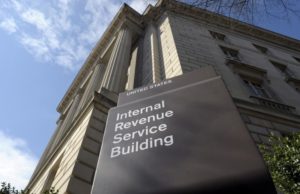Alternative Retirement Savings Plan: Tax Sheltered Annuity 403(b)

Alternative Retirement Savings Plan: Tax Sheltered Annuity 403(b)
Tax-Sheltered Annuity (TSA), also known as a 403(b), is an alternative retirement savings plan. Not everyone can participate in this plan, and it is restricted to those who are employed by educational, cultural, or non-profit organizations such as religious groups (also known as 501 (c)(3) organizations).
TAX-SHELTERED ANNUITY BENEFITS
Contributions to a Tax-Sheltered Annuity are done through a payroll deduction and are therefore taken out pre-tax. This feature of a Tax-Sheltered Annuity is very beneficial since your contributions are not seen as income and you may pay less federal tax at the end of the year. A Tax-Sheltered Annuity is also tax deferred during the accumulation phase. This means you will not pay any taxes on the amount you contribute or the interest earned until you begin the withdrawal phase.
If your plan allows, you may elect to contribute post-tax money to your Tax-Sheltered Annuity by using your paycheck. Any money you contribute post-tax must be declared on your income tax return and is not subject to the tax-deferred exemption. When selecting a Tax-Sheltered Annuity you may choose between fixed and variable, or a combination of the two.
It is possible to take loans from your Tax-Sheltered Annuity, but these loans are limited to the lesser of $50,000 or fifty percent of your vested amount. Another feature of a Tax-Sheltered Annuity is the ability to rollover funds into other investment options. For example, it is possible to use your 403(b) to fund your 401(k), Individual Retirement Account (IRA), or another 403(b).
It is important to check any contribution limits or rules established by the new plan administrator before committing to a rollover. If you die before receiving payments, your beneficiaries are entitled to similar options using your Tax-Sheltered Annuity. A spouse is entitled to all of the aforementioned options, while a non-spouse is prohibited from using your annuity money to fund an IRA. A non-spouse beneficiary is only able to transfer funds from one 403(b) to another.
CONTRIBUTION LIMITS OF A TAX-SHELTERED ANNUITY
Unlike a regular deferred annuity, there are maximum contribution limits determined by the Internal Revenue Service (IRS) for each year. Beginning in 2006 the maximum personal (elective) contribution limit was increased to $15,000 per year, up from $14,000 in 2005. Also in 2006, your employer (non-elective) may choose to contribute to your Tax-Sheltered Annuity with a combined maximum contribution limit of $ 44,000.
You may be able to contribute up to $5000 more per year if you are age 50 or older and an additional $3000 per year if you have been with the same company for more than fifteen years. Failure to comply with these contribution limits can result in additional taxes and penalties for both the employee and contributing employer.
TAX PENALTIES OF TAX-SHELTERED ANNUITY AND AGE REGULATIONS
As with the deferred annuity, a Tax-Sheltered Annuity is used to supplement retirement income. If you decide to withdraw money prior to age 59 ½ you will be subject to a ten percent penalty by the IRS in addition to the standard income tax. There are a few exceptions to paying this penalty, although specific criteria must be met.
If you leave the service, encounter extreme and immediate financial hardship, or become disabled you can avoid paying the ten percent penalty. Although the ten percent penalty is not enforced in these cases, you are still responsible for paying income tax on the money you withdraw. You must begin taking minimum payments from your Tax-Sheltered Annuity in either the same year as your retire or by age 70 ½, whichever comes first.
Failure to do so will result in a fifty percent excise tax on the money you should be receiving. The only exception to this age restriction pertains to all contributions made to a Tax-Sheltered Annuity prior to January 1, 1987. Anyone who paid into a Tax-Sheltered Annuity before this date is allowed to defer withdrawal until age 75. If you die before the withdrawal period your beneficiaries may receive payouts from your Tax-Sheltered Annuity without paying the ten percent penalty, but they are still responsible for the income taxes.
Regulations on tax compliance change every few years to accommodate inflation rates, and it is important to familiarize yourself with these changes to avoid penalties from the IRS. Helpful resources including articles, worksheets, and an updated FAQ page can be located at www.irs.gov and search for keywords “tax sheltered annuity.”
We hope you found this article about “Alternative Retirement Savings Plan: Tax Sheltered Annuity 403(b)” helpful. If you have questions or need expert tax or family office advice that’s refreshingly objective (we never sell investments), please contact us or visit our Family office page or our website at www.GROCO.com. Unfortunately, we no longer give advice to other tax professionals gratis.
To receive our free newsletter, contact us here.
Subscribe our YouTube Channel for more updates.

Alan Olsen, is the Host of the American Dreams Show and the Managing Partner of GROCO.com. GROCO is a premier family office and tax advisory firm located in the San Francisco Bay area serving clients all over the world.
Alan L. Olsen, CPA, Wikipedia Bio

GROCO.com is a proud sponsor of The American Dreams Show.

The American Dreams show was the brainchild of Alan Olsen, CPA, MBA. It was originally created to fill a specific need; often inexperienced entrepreneurs lacked basic information about raising capital and how to successfully start a business.
Alan sincerely wanted to respond to the many requests from aspiring entrepreneurs asking for the information and introductions they needed. But he had to find a way to help in which his venture capital clients and friends would not mind.
The American Dreams show became the solution, first as a radio show and now with YouTube videos as well. Always respectful of interview guest’s time, he’s able to give access to individuals information and inspiration previously inaccessible to the first-time entrepreneurs who need it most.
They can listen to venture capitalists and successful business people explain first-hand, how they got to where they are, how to start a company, how to overcome challenges, how they see the future evolving, opportunities, work-life balance and so much more..
American Dreams discusses many topics from some of the world’s most successful individuals about their secrets to life’s success. Topics from guest have included:
Creating purpose in life / Building a foundation for their life / Solving problems / Finding fulfillment through philanthropy and service / Becoming self-reliant / Enhancing effective leadership / Balancing family and work…

MyPaths.com (Also sponsored by GROCO) provides free access to content and world-class entrepreneurs, influencers and thought leaders’ personal success stories. To help you find your path in life to true, sustainable success & happiness. It’s mission statement:
In an increasingly complex and difficult world, we hope to help you find your personal path in life and build a strong foundation by learning how others found success and happiness. True and sustainable success and happiness are different for each one of us but possible, often despite significant challenges.
Our mission at MyPaths.com is to provide resources and firsthand accounts of how others found their paths in life, so you can do the same.
Foreign Bank Accounts And Gifts To The Federal Government
Today we talk about common problems people run in…
Office Habits That Could Be Burning You Out
Are you aware that there are office habits that could be burning you out? Whether one works at a small start-up or a multinational company, hardly anyone is exempt from stress. While feeling tired is normal, it’s important to know when you’re starting to burn out. It’s the point where you lose the interest and…
The IRS is Not a Bully
The IRS is not a bully. To stop the harassment, did a parent ever tell you to poke the neighborhood bully in the nose? How’d that work out for you? It was effective but painful, right? I know. Without question, the IRS is an important part of our government and absolutely vital to its success…
Cryptocurrency, US National Debt & IRS Scam Calls 01.29.19
Join us this week as we discuss how the IRS is tr…



